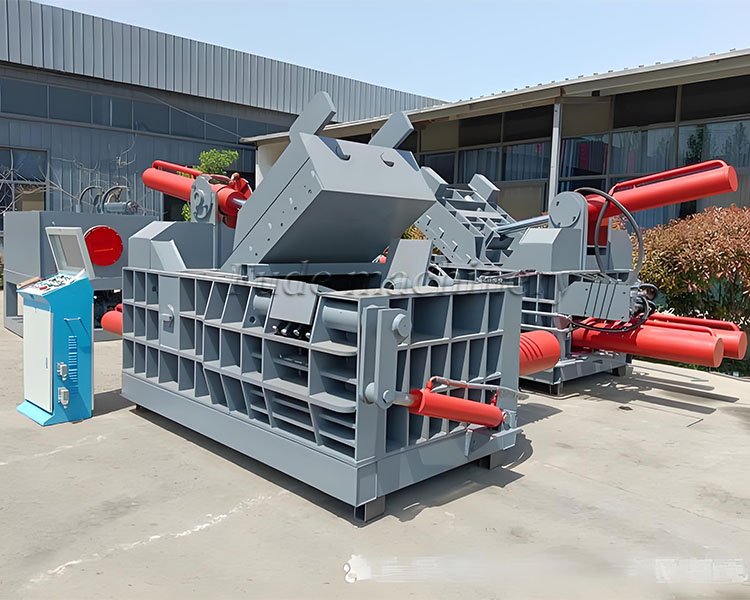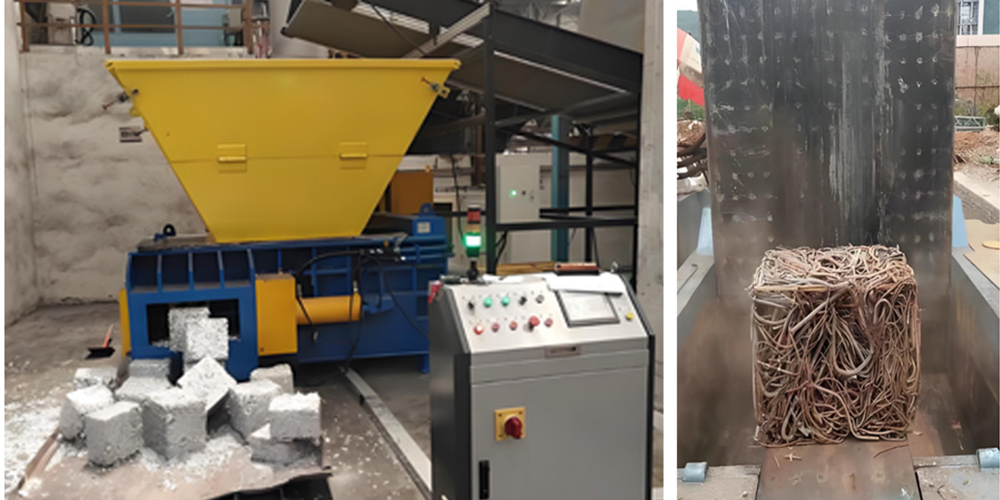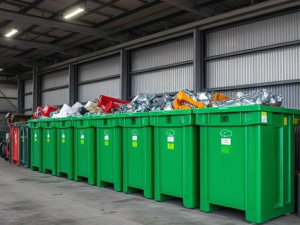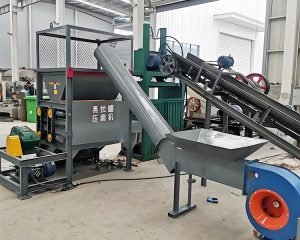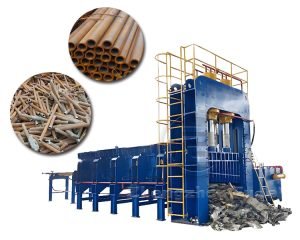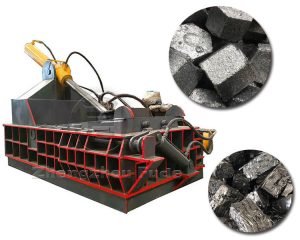Balers are essential machines used in various industries for compacting waste and recyclable materials into manageable bales.
Whether you’re in agriculture, recycling, or waste management, understanding the cost of a baler and what factors influence its price is crucial.
In this article, we will explore the different types of balers, their costs, and factors that affect their pricing. Additionally, we’ll highlight the Fudemetalcrusher Single Axle Tire Shredder, a versatile machine for handling various materials.
Types of Balers and Their Costs
1. Vertical Balers
Vertical balers are compact and typically used for smaller operations. They are ideal for baling cardboard, paper, plastics, and other recyclables.
Price Range:
- Basic Models: $2,000 – $5,000
- Mid-Range Models: $5,000 – $10,000
- High-End Models: $10,000 – $20,000
2. Horizontal Balers
Horizontal balers are more suitable for large-scale operations. They offer higher efficiency and can handle a larger volume of materials.
Price Range:
- Manual-Tie Horizontal Balers: $20,000 – $50,000
- Auto-Tie Horizontal Balers: $50,000 – $100,000
- Fully Automated Systems: $100,000 – $200,000+
3. Two-Ram Balers
Two-ram balers are versatile and can handle various materials, including metals, plastics, and paper. They are designed for high-capacity operations.
Price Range:
- Basic Models: $150,000 – $300,000
- Advanced Models: $300,000 – $500,000
- High-Capacity Models: $500,000 – $1,000,000+
4. Specialty Balers
These balers are designed for specific materials such as textiles, foam, or agricultural products.
Price Range:
- Basic Models: $10,000 – $50,000
- Advanced Models: $50,000 – $150,000
- High-Capacity Models: $150,000 – $300,000+
Factors Influencing Baler Costs
1. Type of Baler
The type of baler significantly impacts its cost. Horizontal and two-ram balers are generally more expensive than vertical balers due to their capacity and efficiency.
2. Capacity and Throughput
Higher capacity balers that can process larger volumes of material in shorter times tend to be more expensive. Consider your operational needs to determine the appropriate capacity.
3. Automation Level
Fully automated balers with features like auto-tie and programmable logic controllers (PLCs) are more expensive but offer greater efficiency and reduced labor costs.
4. Material and Build Quality
Balers made from high-quality materials such as thickened steel plates and equipped with durable components like pure copper motors are more costly but provide better longevity and performance.
5. Brand and Manufacturer
Reputable brands and manufacturers often charge a premium for their products due to their proven reliability, customer support, and warranty options.
6. Additional Features
Features such as cross-cutting, shredding, or integrated conveyors can increase the price of a baler. Evaluate the necessity of these features based on your specific needs.
7. Maintenance and Operating Costs
Consider the long-term costs of maintenance and operation. Some balers may have higher upfront costs but lower maintenance and operational expenses.
In addition to balers, shredders play a crucial role in waste management and recycling. The Fudemetalcrusher Single Axle Tire Shredder is a versatile machine that can handle a wide range of materials.
Key Features:
- Model: Customizable on demand
- Applicable Scope: Waste paper, leather, tires, pipes, household appliances, wood, waste cars, etc.
- Electrical Machinery: Pure copper motor
- Body Material: Thickened steel plate
This shredder is designed to offer high efficiency and durability, making it an excellent investment for businesses involved in recycling and waste management.
Price Range:
- Basic Models: $20,000 – $50,000
- Advanced Models: $50,000 – $100,000
- High-Capacity Models: $100,000 – $200,000+
Final TOughts
The cost of a baler can vary widely based on several factors, including the type of baler, capacity, automation level, material quality, brand, and additional features. Vertical balers are generally more affordable, making them suitable for smaller operations, while horizontal and two-ram balers are more expensive but offer higher efficiency and capacity for large-scale operations.
When choosing a baler, it is essential to consider not only the initial purchase price but also the long-term operating and maintenance costs. Investing in a high-quality baler from a reputable manufacturer can provide better performance, durability, and overall value.
For businesses looking to expand their waste management capabilities, the Fudemetalcrusher Single Axle Tire Shredder offers a versatile solution that can handle a variety of materials. Its robust construction and customizable features make it a valuable addition to any recycling or waste management operation.
By understanding the costs and features of different balers and shredders, you can make an informed decision that best meets your operational needs and budget.
FAQs
1. What is the difference between vertical and horizontal balers?
Vertical balers are compact and suitable for smaller operations, while horizontal balers are designed for larger-scale operations and can handle a higher volume of materials more efficiently.
2. How much does a high-capacity two-ram baler cost?
High-capacity two-ram balers can cost between $500,000 and $1,000,000+, depending on their specifications and features.
3. What factors should I consider when choosing a baler?
Consider the type of baler, capacity and throughput, automation level, material and build quality, brand, additional features, and long-term maintenance and operating costs.
4. Is it worth investing in a fully automated baler?
Fully automated balers can be more expensive initially but offer greater efficiency and reduced labor costs, which can lead to long-term savings and improved productivity.
5. What materials can the Fudemetalcrusher Single Axle Tire Shredder handle?
The Fudemetalcrusher Single Axle Tire Shredder can handle waste paper, leather, tires, pipes, household appliances, wood, waste cars, and more, making it a versatile solution for various recycling and waste management needs.
6. How often should a baler be maintained?
Regular maintenance is crucial for the longevity and performance of a baler. Follow the manufacturer’s recommendations for maintenance schedules, which typically include daily, weekly, and monthly checks and servicing.
By understanding the various factors that influence the cost of a baler and considering your specific operational needs, you can choose the right baler that offers the best value and efficiency for your business.
Investing in high-quality equipment like the Fudemetalcrusher Single Axle Tire Shredder can further enhance your waste management capabilities, leading to better productivity and profitability.
 Fudemetal Crusher
Fudemetal Crusher

